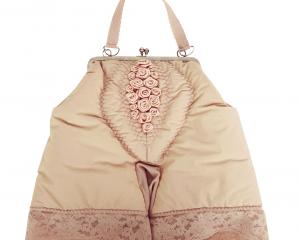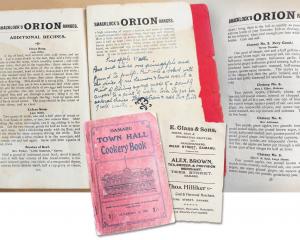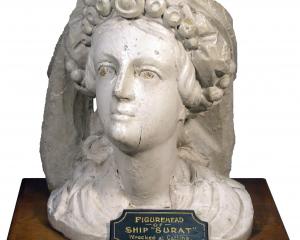A transparently beautiful touch of the East adorns a set of jars at Olveston.
Five large Islamic glass covered jars are part of the decor in the Card Room, also known as the Persian Room, at Olveston Historic Home. Their exotic origin and aesthetic artistry fit with the design hallmarks of Victorian-era interior decorating: colour, pattern, opulence and romance.
Believed to be made in the 19th century, the jars in the Olveston Collection are copies from a long tradition of glass-making and decorating across the Islamic world, which initiated from the Arabian Peninsula in the 7th century.
With adaptation and refinement of Egyptian and Roman techniques, and further innovations, Islamic glassware achieved a very high standard of artistic imagination and expertise. Over the centuries, complex techniques involving enamelling, gilding and coloured staining of glass in polychrome ornamentation were mastered.
Decoration was based on the three distinct disciplines of Islamic art: geometric ornament, calligraphy, and vegetal motifs (floral patterns representing the underlying order and unity of nature) also known as biomorphic art. Sometimes human figures, animals, birds, and fish were depicted.
Islamic glass, both as luxury goods that were traded and exchanged and as simple containers for liquids of all kinds, circulated throughout the Islamic world and as far as southeastern Asia, northern China and Europe. In the later Middle Ages it was prized by Europeans not only for its exotic appearance and technical sophistication, but also perceived as relics from the Holy Land.
The 14th century was the zenith of Islamic glass-making, then production virtually ended in Egypt, Syria and Persia. By the late 15th century most enamelled-glass production had shifted to Europe, particularly Venice. Later craftsmen produced high-quality glassware in the empires of the Ottomans (Turkey, the Near East, and the Balkans), the Safavids (Iran), and the Mughals (India). In the 19th century, glass-makers in Austria, Bohemia and France began to create objects decorated in Islamic style.
- Prepared by Jenny Longstaff, housekeeper and tour guide at Olveston Historic home.














